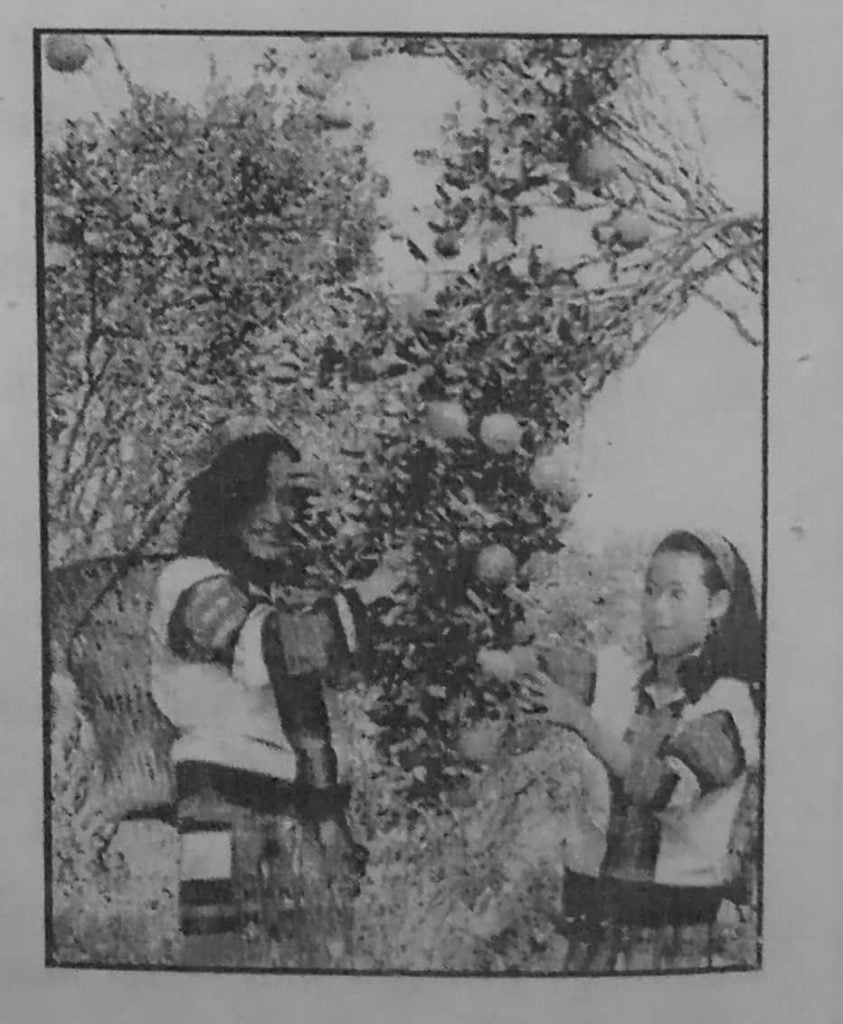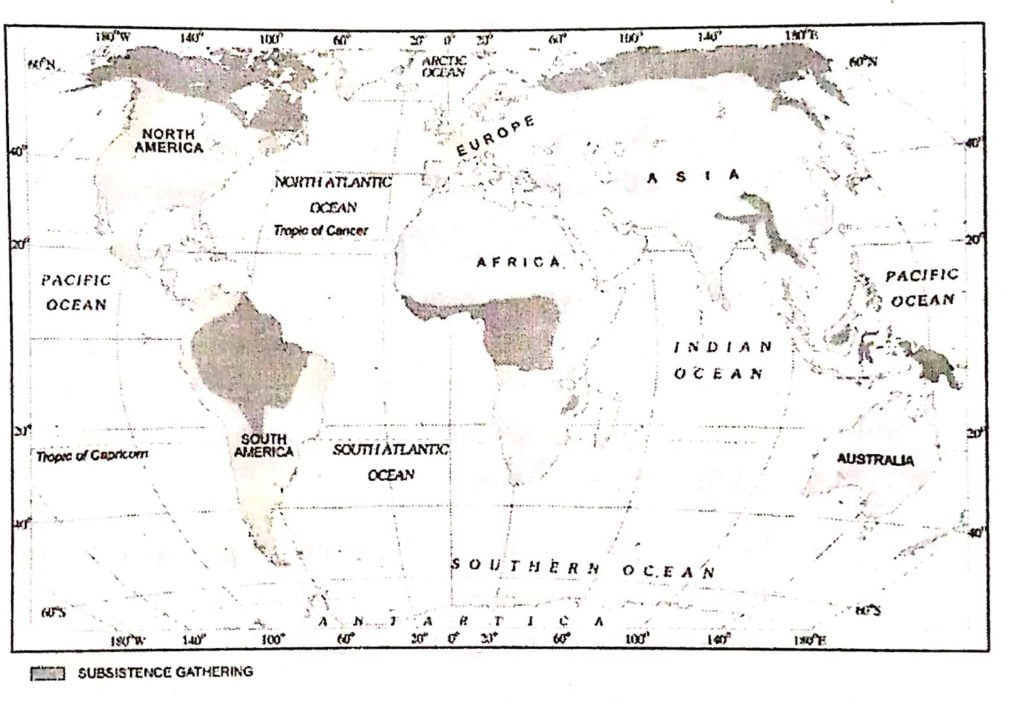Class 12 Geography Chapter 5 Primary Activities Question answer to each chapter is provided in the list so that you can easily browse throughout different chapters SCERT Class 12 Geography Chapter 5 Primary Activities and select need one.
Class 12 Geography Chapter 5 Primary Activities
Also, you can read the SCERT book online in these sections Solutions by Expert Teachers as per SCERT (CBSE) Book guidelines. These solutions are part of SCERT All Subject Solutions. Here we have given Assam Board/NCERT Class 12 Geography Chapter 5 Primary Activities Solutions for All Subject, You can practice these here…
Primary Activities
Chapter: 5
PART-1
GEOGRAPHY
TEXTUAL QUESTION & ANSWER
Q.1. Which one of the following is not a plantation crop?
(a) Rubber
(b) Coffee
(c) Sugarcane
(d) Rice
Ans :- (d) Rice
Q.2. In which of the following countries cooperative farming was successfully done?
(a) India
(b) The Netherlands
(c) Denmark
(d) Russia
Ans :- (b) The Netherlands
Q.3. Growing of flowers is called
(a) Truck farming
(b) Mixed farming
(c) Plantation farming
(d) Floriculture
Ans :- (d) Floriculture
Q.4. Which one of the following types of cultivation was developed by the European colonists?
(a) Shifting agriculture
(b) Mixed farming
(c) Viticulture
(d) Plantation
Ans :- (d) Plantation
Q.5. In which one of the following regions the extensive commercial cultivation is not practiced?
(a) Prairies of America
(b) Pampas of Argentina
(c) Steppes of Europe
(d) Amazon basin
Ans :- (d) Amazon basin
Q.6. Which one of the following terms is alternatively used for shifting cultivation?
(a) Commercial livestock rearing
(b) Primary subsistence agriculture
(c) Mixed farming
(d) Cooperative farming
Ans :- (b) Primary subsistence agriculture
Q.7. Which one of the following is not a monoculture?
(a) Plantation farming
(b) Mixed farming
(c) Commercial grain farming
(d) Dairy farming
Q.Ans :- (b) Mixed farming
Q.8. Which one of the following methods of farming/cultivation practiced in the hill areas of Northeast India?
(a) Truck farming
(b) Mixed farming
(c) Commercial grain farming
(d) Shifting agriculture
Ans :- (d) Shifting agriculture
VERY SHORT TYPE QUESTION & ANSWER (1 MARKS)
Q.9. What are economic activities?
Ans :- Human activities which generate income are called economic activities.
Q.10. What are primary activities?
Ans :- Which activities are directly dependent on the environment are called primary activities.
Q.11. At what level is animal rearing practised?
Ans :- Animal rearing is practised either at the subsistence or a commercial level.
Q.12. What is Pastoralism?
Ans :- Pastoralism is an economy that solely depends upon animals. Depending on the geographical factors and technological development pastoralism or animal rearing today is practised at different levels.
Q.13. Give the names of two types of mining.
Ans :- Surface mining and underground mining.
Q.14. Name two primary activities.
Ans :- Hunting and animal rearing.
Q.15. What is a Red Collar Worker?
Ans :- People engaged in primary activities are called Red collar workers due to the outdoor nature of their work.
Q.16. What is subsistence Agriculture?
Ans :- Which agriculture mainly practiced for farmer’s self sufficiency is called subsistence agriculture.
Q.17. What do you mean by Collective Farming?
Ans :- Collective farming is based on social ownership of the means of production and collective labour.
Q.18. What is Extensive Commercial Grain Cultivation?
Ans :- Extensive Commercial Grain Cultivation is practised in extensive areas for commercial purpose.
SHORT TYPE QUESTION & ANSWER : (MARKS -3)
Q. 19. Give the reasons why market gardening is practiced near urban areas.
Ans :- Market gardening is practiced mainly for urban areas. These types of gardening have very good transportation links with the urban centre where a high income group of consumers is located. The product of gardening is very costly. Because it is labour and capital intensive and lays emphasis on the use of irrigation, Heavy seed, fertilizers, insecticides, greenhouse and artificial heating in older regions. These facilities are easily available near urban areas only. So market gardening is practiced near urban areas.
Q.20. State the characteristics of the pastoral nomadism :
Ans :- The characteristics of the pastoral nomadism :
(i) This is a primitive subsistence activity. At some stage in history, with the realisation that hunting is an unsustainable activity, man beings might have thought of domestication of animals.
(ii) In this type of activity, people move from one place to another along with their livestock depending on the amount and quality of postures and water.
(iii) The herders migrate from plan area to pastures on mountain during summers and again from mountain to plain during winter. This process is called transhumance.
Q.21. State the characteristics of Tertiary activities?
Ans :- The characteristics of tertiary activities are :
(i) Tertiary activities are related to the service sector which are special skills provided in exchange of payment or salary.
(ii) Health, Education, law. governance and etc. are examples of tertiary activities.
(iii) In a developed economy or in the developed countries, a larger proportion of people get employment in tertiary activities.
Q.22. Why has hunting been banned in India?
Ans :- In the primitive societies, the hunters used primitive tools made of stones, twigs or arrows. So the number of animals killed was limited. The number of hunters was also less. But today with the help of modern technology, man can hunt a large number of animals within a short time.
Many species, now have become extinct or endangered due to illegal hunting of India So to preserve or protect animals from hunters the Government of India boomed animal hunting in India. There some Art against animal hunting in India
Q.23. What are the important characteristics features of plantation agriculture?
Ans :- The important characteristics features of plantation agriculture are as follows:
(i) The plantation agriculture was introduced by the Europeans in colonies situated in the tropics.
(ii) The plantation agriculture needed highly investment of capital, scientific method and technological support, cheap labour, single crop specialisation, irrigation facilities, etc.
(iii) This type of farming also needed a good system of transportation as it linked the estates to the factories and markets for the export of the product.
Q.24. Explain hunting and gathering as primary activities.
Ans :- The earliest human beings depended on their immediate environment for their sustenance.
They subsisted on :
(a) animals which they hunted
(b) the edible plants which they gathered from forests in the vicinity.
Primitive societies depended on wild animals i.e. they survived on hunting. At that time they used primitive tools made of stones, twigs, or arrows. This type of activity was generally found in very cold and extremely hot climate areas.
Gathering is practised in regions with harsh climatic conditions. It often involves primitive societies who extract both plants and animals to satisfy their needs for food, shelter and clothing. It requires a small amount of capital investment and operates at a very low level of technology.

Gathering is practised in :
(a) High latitude zone which includes northern Canada, northern Eurasia and Southern Chile.
(b) Low latitude zones such as the Amazon Basin, tropical Africa, Northern fringe of Australia and the interior parts of SouthEast Asia.

Q.25. Explain major features of cooperative farming.
Ans :- The major features of cooperative farming are :
(i) A group of farmers form a co-operative society by pooling in their resources voluntarily for a more efficient and profitable farming system. This is called co-operative farming.
(ii) Co-operative society help farmers in all aspects to procure all important inputs of farming
(iii) The society helps farmers to sell the finished product at the most favourable terms and helps in processing of quality products at cheaper rates.
(iv) This type of farming is famous in western countries like Denmark. Netherland, Belgium, Sweden etc.
Q.26. What are the characteristics of Commercial Livestock Rearing?
Ans :- The main characteristics of commercial Livestock Rearing are:
(i) In this type of rearing only one type of animal is reared. Sheep, cattle, goats and horses are important animals reared here.
(ii) the commercial livestock rearing is very organised and capital intensive activity Rearing of animals in ranching is organized on a scientific basis. The main emphasis is on breeding, genetic improvement, disease controlled and health care of the animals.
(iii) The rearing ranches cover a large area and are divided into a number of parcels. They are fenced to regulate the grazing. When the Grass of one parent is grazed, animals are moved to another pair. The number of animals in a pasture is kept according to the carrying capacity of the pasture.
| Sl. No. | CONTENTS |
| PART-1 | |
| Chapter 1 | Human Geography Nature & Scope |
| Chapter 2 | The World Population Distribution, Density & Growth |
| Chapter 3 | Population Composition |
| Chapter 4 | Human Development |
| Chapter 5 | Primary Activities |
| Chapter 6 | Secondary Activities |
| Chapter 7 | Tertiary and Quaternary Activities |
| Chapter 8 | Transport and Communication |
| Chapter 9 | International Trade |
| Chapter 10 | Human Settlement |
| PART-2 | |
| Chapter 11 | Population Structure of India |
| Chapter 12 | Migration Pattern in India |
| Chapter 13 | Human Resources Department |
| Chapter 14 | Human Settlement of India |
| Chapter 15 | Land Resource and Agriculture |
| Chapter 16 | India’s Water Resources |
| Chapter 17 | Mineral and Fuel Resources in India |
| Chapter 18 | Manufacturing Industries of India |
| Chapter 19 | Planning and Sustainable Development in Indian Context |
| Chapter 20 | Transport and Communication in India |
| Chapter 21 | International Trade |
| Chapter 22 | Problems and Issues Geographical Perspective |
| PART-3 | |
| Chapter 23 | Assam Geography |
Q.27. What are the characteristics of different types of mining?
Ans :- According to the mode of occurrence and the nature of the ore mining are two types – surface mining and underground mining.
The characteristics of surface mining are :
(i) When the are is occur close to the surface, then the surface mining method is used
(ii) The surface mining is known as open east mining also. This is the easiest and the cheapest way of mining overhead costs and equipment is relatively low in this method.
(iii) The output of this method is both rapid and large.
The characteristics of underground mining are:
(i) When the ore lies deep below the surface the underground mining method has to be used.
(ii) The underground method is very risky and costly. It requires specially designed lifts, drills, haulage vehicles, ventilation systems, etc.
(iii) In the underground method vertical shafts have to be sunk, from where underground gallerias radiate to reach the minerals. Minerals are extracted and transported to the surface through these passages.
Q.28. State the characteristics of Quaternary Activities.
Ans :- Among various activities of human beings one of the most significant activities is quaternary activities.
The characteristics of these activities are :
(i) Quaternary activities involves the collection, production and dissemination of information or even the production of information
(ii) These activities centre around research, development and may be seen as an advanced form of services involving specialized knowledge and technical skills.
(iii) This sector evolves in well developed countries and requires a highly educated workforce. In the quaternary sector, companies invest to ensure further expansion. Research will be directed into cuttrating costs. tapping into the market, producing innovative ideas, new production etc.
(iv) Now a day’s entertainment activities are also included in quaquaniestenary activities.
Q.29. Give main features of Commercial Livestock Rearing.
Ans :- The main characteristics of commercial Livestock Rearing are:
(i) In this type of rearing only one type of animal is reared. Sheep, cattle, goats and horses are important animals reared here.
(ii) the commercial livestock rearing is very organised and capital intensive activity Rearing of animals in ranching is organized on a scientific basis. The main emphasis is on breeding, genetic improvement, disease controlled and health care of the animals.
(iii) The rearing ranches cover a large area and are divided into a number of parcels. They are fenced to regulate the grazing. When the Grass of one parent is grazed, animals are moved to another pair. The number of animals in a pasture is kept according to the carrying capacity of the pasture.
Q.30. Give the major features of Extensive Commercial Grain Cultivation?
Ans :- The major features of extensive commercial grain cultivation are :
(i) In extensive commercial grain cultivation the cultivated land is very extensive and it is farming mainly for commercial purpose.
(ii) As the size of the form is very large, the entire operation of cultivation from ploughing to harvesting is mechanized.
(iii) Though wheat is the principal crop of this farming, other craps like karlay, oats, corn are also ground.
(iv) Extensive commercial grain cultivation in practised in the interior part of semi arid lands of the mid latitude region like in Eurasian steppes the Canadian and American prairies, the pampas of Argentina. Ete.
See Next Page No Below…

Hi, I’m Dev Kirtonia, Founder & CEO of Dev Library. A website that provides all SCERT, NCERT 3 to 12, and BA, B.com, B.Sc, and Computer Science with Post Graduate Notes & Suggestions, Novel, eBooks, Biography, Quotes, Study Materials, and more.



